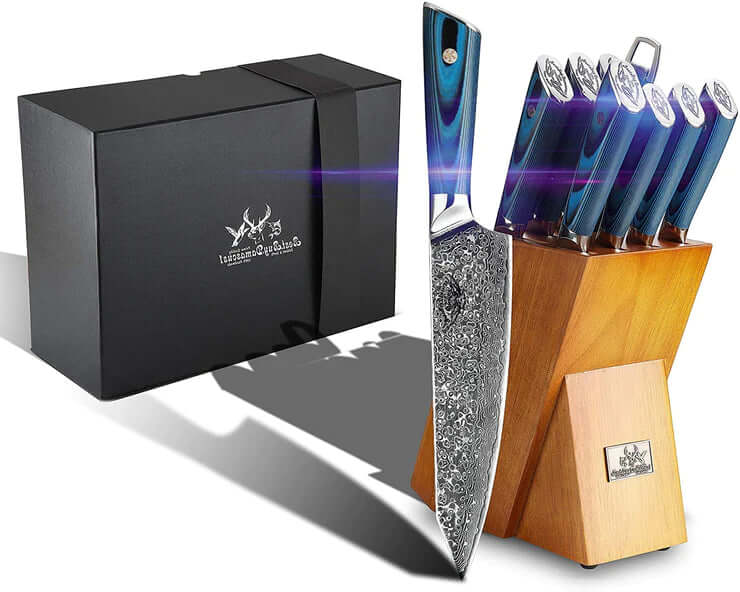
Damascus Knives: The Ultimate Knives for Culinary Tasks
Posted by Best.Buy. Damascus1 on
Both professional chefs and home cooks choose Damascus steel knives for executing their daily chores. It is their excellent sturdiness, flexibility, and ability to keep a fantastic edge that have made these knives so popular.
A well-made Damascus blade actually keeps its edge longer than a production knife. A Damascus knife will consistently complete the task of slicing beef ribs or other items whenever you use it for your cutting jobs.
The incredible strength and durability of Damascus knives is because they are manufactured from two different types of steel. High-carbon steel is folded over on itself repeatedly to create the Damascus process. A strong blade results from this procedure. This strength depends on a number of factors, one of which is the folding, which enables the high-carbon steel to form a single piece.
Additionally, the folding leaves a distinctive pattern on the blade that adds visual appeal. Another factor contributing to the durability of Damascus knives is the combination of two distinct types of steel to produce a more durable blade without compromising flexibility.
Chef knives typically come in two varied lengths: 8 inches and 10 inches. These measurements only apply to the size of the blade, not the entire knife, including the handle.
How Should You Use a Damascus Chef Knife?
The Damascus knives specifically designed for culinary tasks are distinguished by their blade's slightly curved edge and sharp, pointed tip. The rocking cutting technique is best suited to this type. The chef knife's design allows it to rock back and forth from tip to heel, which gives it the name "rocking method." This reduces the preparation time because you can quickly chop up items without removing the knife's blade from the cutting board.
What is the Use of a Damascus Chef Knife?
Both small tasks like mincing vegetables or herbs and bigger ones like slicing a ham or spatchcocking a chicken can be done with them. If you don't have a carving knife, you can even use Damascus knives designed for chefs to carve meat and separate it from the bone.
A Damascus knife always meets all cutting requirements. Be it peeling fruits or vegetables, slicing bread, or cutting onions, it’ll work extremely well.
How to Take Care of Your Damascus Chef Knife
It's crucial to hone and sharpen your Damascus knives to keep them in the best condition possible. It is recommended honing your Damascus chef knife at least four times a year, or every season if you use it almost daily. One or even two times a year can be used for sharpening. This is because honing just forces the steel back into place, whereas sharpening removes some of it.
Damascus knives for chefs can serve their best for many years to come if properly used and cared for. Purchase a quality Damascus blade, and you’ll never regret your investment.

